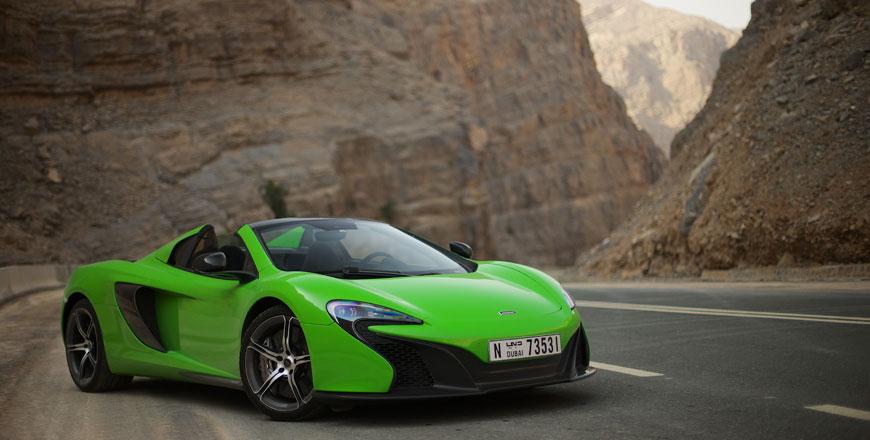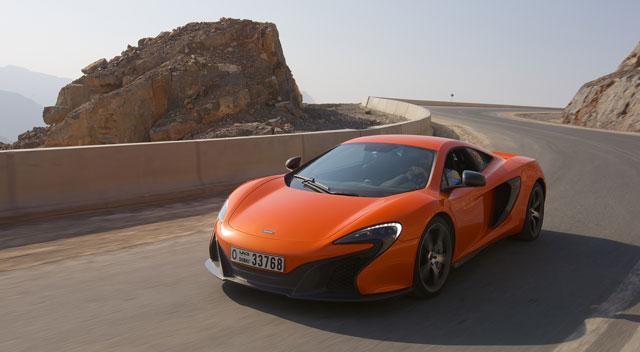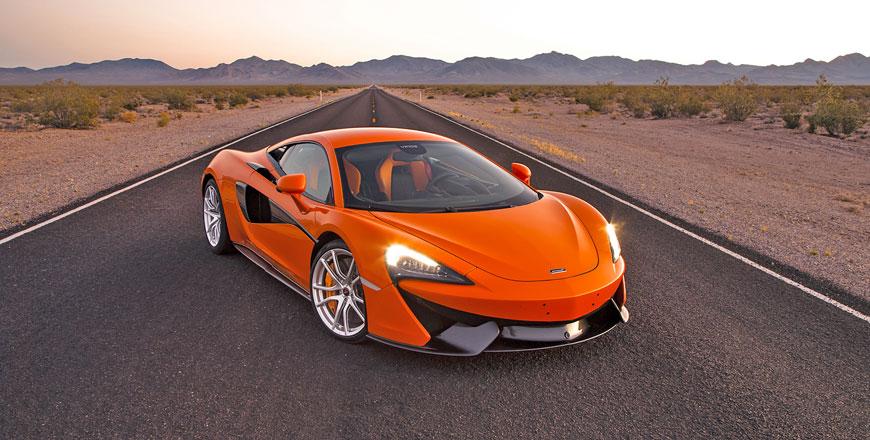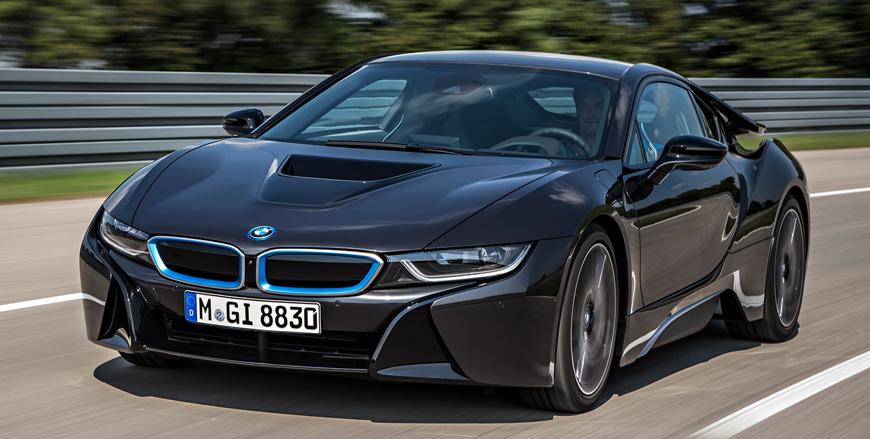You are here
Corner-carving clarity and comfort
By Ghaith Madadha - Aug 10,2015 - Last updated at Aug 10,2015

Photo courtesy of McLaren
Succeeding the McLaren 12C super car it was meant to complement owing to popular demand, the 650S is based on the same basic chassis, suspension and mechanicals, but is better honed and more visceral in performance and design. With 25 per cent difference of components from its predecessor, the 650S delivers a more focused and sharper driving experience.
Sitting in between the more accessible 570S and P1 hybrid hypercar in the McLaren range, the 650S may be more visceral, engaging and racier than the 12C, but is no stripped out road racer. Instead improves on and distils its predecessor’s sublime precision, delicacy, intuitive intimacy, subtle fluency and driving accessibility.
Futuristic and flowing
Inspired by the P1 and now the corporate face of McLaren, the 650S’ moody, menacing and arrestingly swooping front-end, headlights and intakes create a sense of motion and resemble McLaren’s brand logo. Futuristically dramatic in demeanour, compared to its 12C predecessor’s sophisticated but more understated design approach, the 650S’ slatted rear lights are, however, little altered.
Thick scalloped wings serve as markers to position the front wheels’ through corners, while the 650S’ profile features a seductively rising waistline. Deep carbon-fibre covered side gills feed air to its twin-turbo mid-engine and reflect the McLaren emblem. An up-tilted carbon fibre rear bumper and diffuser assembly creates a greater sense of urgency to how the 650S sits on road.
With carbon fibre body segments, including front air splitter and side mirror housings, used to reduce weight, the 650S’ also features long thin stalks for better aerodynamic flow. Meanwhile, revised aerodynamics and automatically rising spoiler/airbrake a 24 per cent down-force increase for and improve high-speed stability and steering precision and feel.
Manic and muscular
Reworked for the 650S, McLaren’s twin-turbocharged 3.8-litre V8 engine features new pistons and cylinder heads, bigger intercoolers, freer-flowing exhausts and revised valve timing and engine management. Netting 25BHP and 57lb/ft rises over the 12C, the 650S more effortlessly delivers its 641BHP at 7,250rpm and 500lb/ft at 6,000rpm as it ferociously tears through to its Spine-tingling 8,500rpm rev limit.
And while mid-range torque remains abundant muscular, the 650S’ delivery, however, feels more urgent and peaky, rather than evenly spread across a plateau. Meaningful from tick-over and robust from 2000rpm, the 650S’ engine is muscularly rich in mid-range. Riding a broad and fulsomely effortless mid-range, the 650S is explosively swift, eager, intense and responsive as it reaches towards its top-end.
Truly special among turbocharged engines, the 650S twin-turbo V8 spools swiftly and delivers responsively crisp throttle control, like a well-sorted naturally aspirated engine. Just 40kg heavier in Spider guise — as tested — over the fixed-head Coupe, the 1,370kg al fresco 650S is just as quick through the 0-100km/h benchmark at 3 seconds flat. It also accelerates to 200km/h in 8.6 seconds and onto a 329km/h maximum.
Supple and stiff
Viciously swift beyond 6000rpm, the 650S seemingly compresses time and space, and following through a sweeping corner in a single gear, its long-legged rev limit provides throttle and handling fluency. A 7-speed dual-clutch automated gearbox features successively sharper settings, with momentary ignition interruption and exhaust popping on hard “sport” mode up-shifts. “Track” mode engages the clutch before revs drop for additional up-shift shove.
Built on a stiff and light carbon fibre chassis, the 650S Spider’s rigidity is exceptional for a convertible, even on rutted semi-dirt roads approaching the UAE’s Jebel Jais hill climb. The 650S’ stiffness also allows its innovative hydraulic ProActive Chassis Control suspension to work better. Actively adjustable, the 650S’ suspension delivers faultless agility, handling finesse and fluently forgiving ride characteristics.
Driven in convertible Spider guise, the 650S doesn’t use additional chassis bracing over the hard top version owing to stiff carbon fibre construction. Meanwhile, its adjustable hydraulic suspension’ refinement, precision and effectiveness makes anti-roll bars redundant, and automatically softens and provides increased wheel travel for unique super car comfort, and alternately stiffens for sublime body control, and features three selectable stiffness levels.
Evocative and ergonomic
Glides over imperfections with uncannily supple fluidity, the 650S is nuanced, fluent, textured and adept through diverse conditions. Resolutely stable and refined at speed, the Spider was harmoniously in its element through the sprawling Jebel Jais switchbacks. With crisp scalpel-like sharpness, taut body control, tenacious lateral grip and darty agility the 650s tucks and weaves through successive corners with faultless fluency.
Flattering and enabling, the 650S is focused, sophisticated and buttoned down, hugging the road through corners and on rebound, while standard carbon ceramic brakes provide resilient, effective and fade-free stopping power. A model of clarity, the 650S’ quick and positive 2.66-turn steering is sublimely balance between nuanced feel, feedback, speed and reassuring directional stability.
Refined with rear buttresses and its 17-second folding back neatly behind the cabin, the Spider provides a visceral and acoustically charged alfresco experience to enjoy its growling and popping soundtrack. Elegantly minimalist and sophisticated inside with leathers, suede roofliner and metal and carbon fibre trim, the 650S Spider ideally and ergonomically accommodates larger drivers. A slim floating console maximises cabin space, while available equipment is extensive.
SPECIFICATIONS
Engine: 3.8-litre, mid-mounted, all-aluminum, dry sump, twin turbo V8 cylinders
Valve-train: 32-valve, DOHC, continuously variable valve timing
Bore x stroke: 93 x 69.9mm
Compression ratio: 8.7:1
Gearbox: 7-speed automated sequential dual clutch, RWD
Ratios: 1st 4:1; 2nd 2.6:1; 3rd 1.9:1; 4th 1.5:1; 5th 1.2:1; 6th 0.9:1; 7th 0.7:1
Final drive: 3.3:1
Power, BHP (PS) [kW]: 641 (650) [478] @7,250rpm
Specific power: 168.7BHP/litre
Power-to-weight: 467.88BHP/ton
Torque, lb/ft (Nm): 500 (678) @6,000rpm
Specific torque : 178.47Nm/litre
Engine redline: 8,500rpm
0-100km/h: 3 seconds
0-200km/h: 8.6 seconds
0-300km/h: 26.5 seconds
0-400 metres: 10.6 seconds @ 222km/h
Top speed: 329km/h
Fuel consumption, combined: 11.7l/100km
Fuel capacity: 72 litres
CO2 emissions, combined: 275g/km
Body structure: Carbon fibre monocell, aluminum front & rear frames
Height: 1,203mm
Width: 2,093
Length: 4,512mm
Wheelbase: 2,670mm
Track, F/R: 1,656/1,583mm
Dry weight: 1370
Weight distribution F/R: 42 per cent / 58 per cent
Steering: Power-assisted rack and pinion
Lock-to-lock: 2.66 turns
Turning circle: 12.3 metres
Suspension: Double wishbones, coil springs, adaptive hydraulic damping
Brakes, F/R: Carbon ceramic discs, aluminum hubs, 394/380mm
Brake calipers, F/R: 6- / 4-pistons
100-0km/h: 30.7 metres
200-0km/h: 124 metres
Tyres, F/R: 235/35R19 / 305/30R20
Related Articles
Initially intended to complement the McLaren 12C as a sharper, more focused and powerful supercar bridging the gap to the brand’s P1 hybrid hypercar, the 650S has, however, come to replace the 12C — as some speculated — owing to overwhelming customer preference for the newer car.
The first in British super car manufacturer McLaren’s expanded entry-level Sports Series cars, the 570S is a more affordable offering slated
The first mid-engine BMW since the M1 sports car of 1978, the BMW i8 was first glimpsed as the Vision Efficient Dynamics concept in 2009, be



















